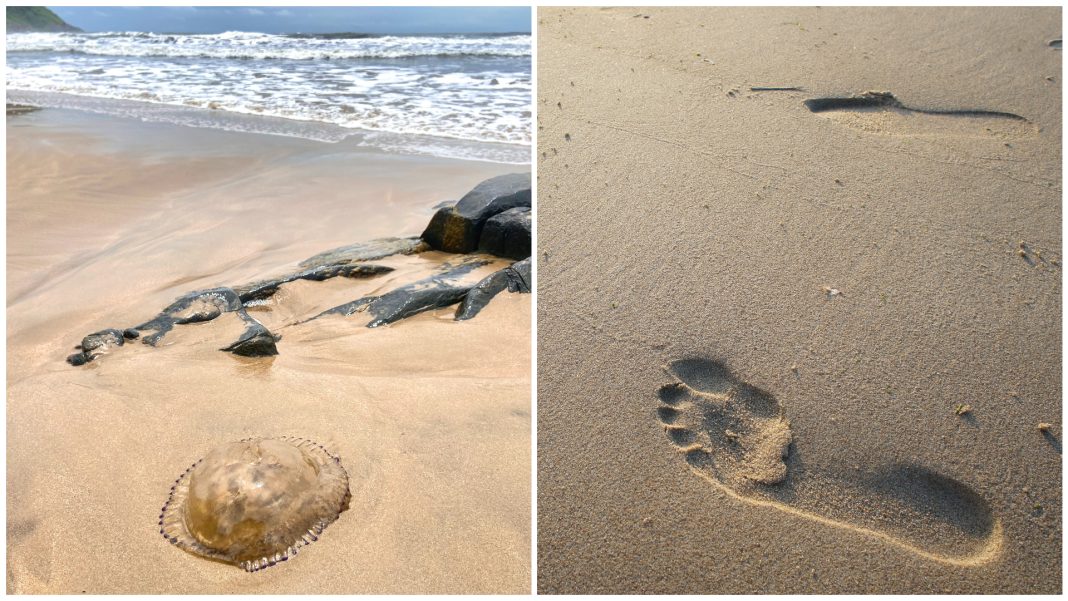Jellyfish is a beautiful creature, but better be safe and not touch it. They appear charming and cute, yet some of them are potentially dangerous.
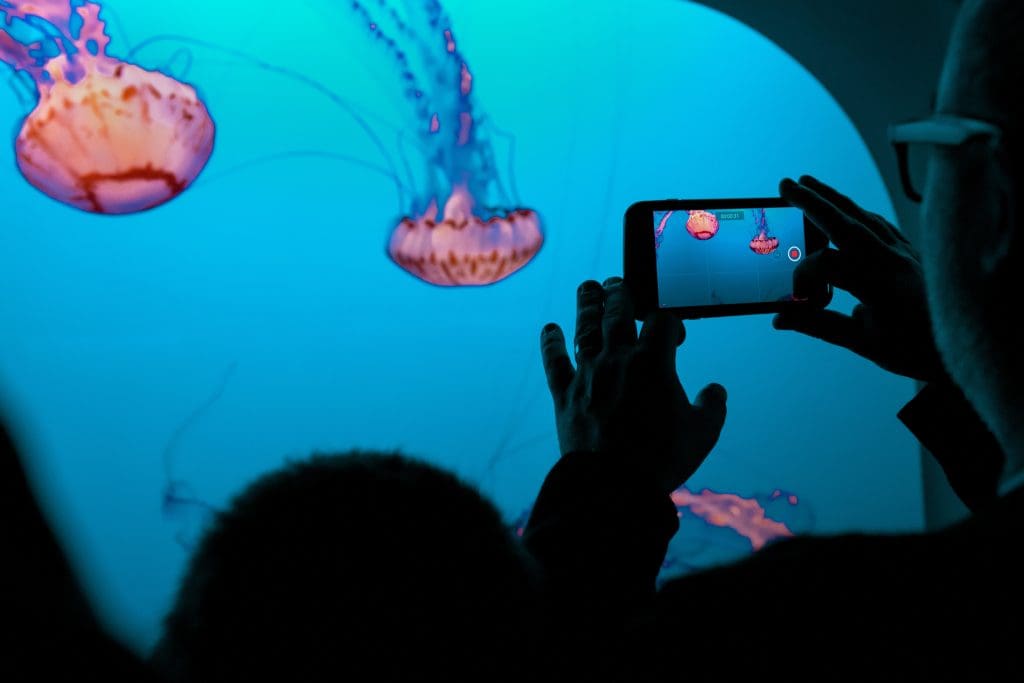
The Philippines, a tropical paradise renowned for its breathtaking beaches and vibrant marine life, is no exception to the natural phenomena that can occur along coastal destinations. During jellyfish season, these alluring yet potentially hazardous creatures make their presence felt along the country’s coastline. Visitors should exercise caution and be aware of their presence when enjoying the splendors of the Philippine seas.
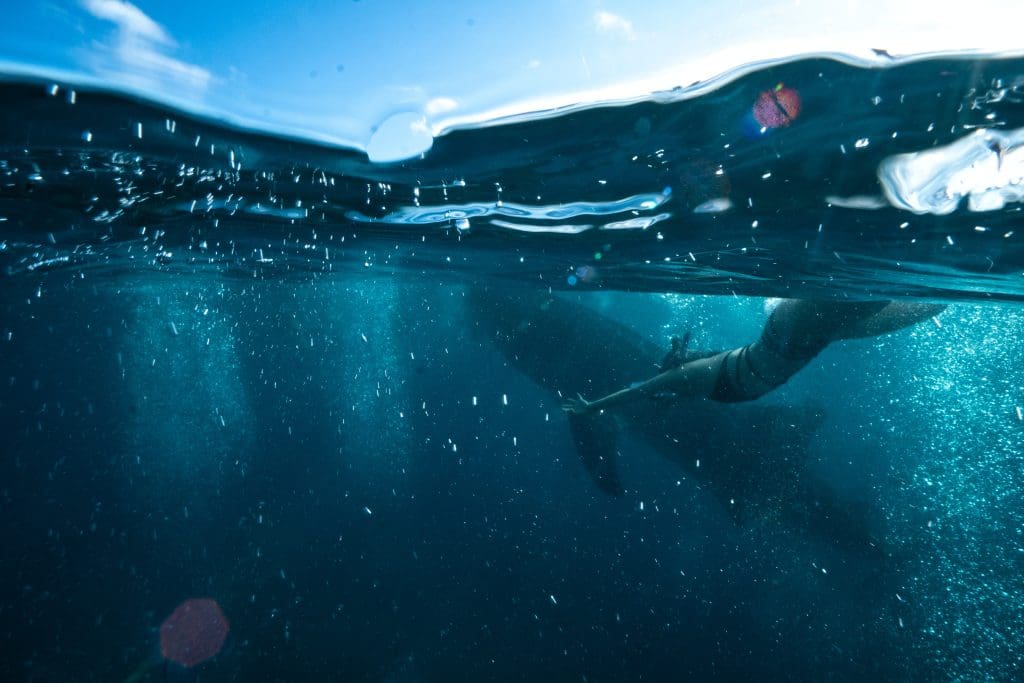
Mysteries of the Deep
“Mesoglea” refers to the jelly-like material that gives these organisms their common name. They do not have a backbone since they are invertebrates. It has a body that feels smooth and jelly-like and tentacles that come with tiny stinging cells.
Jellyfish go with the flow and float with the current, which means if the current comes to shore, jellyfish may occur too. Strong winds can also be why jellyfish come to the shore and end up on the beach because they contain so much water; as a result, jellyfish die quite fast and wash up on a beach.
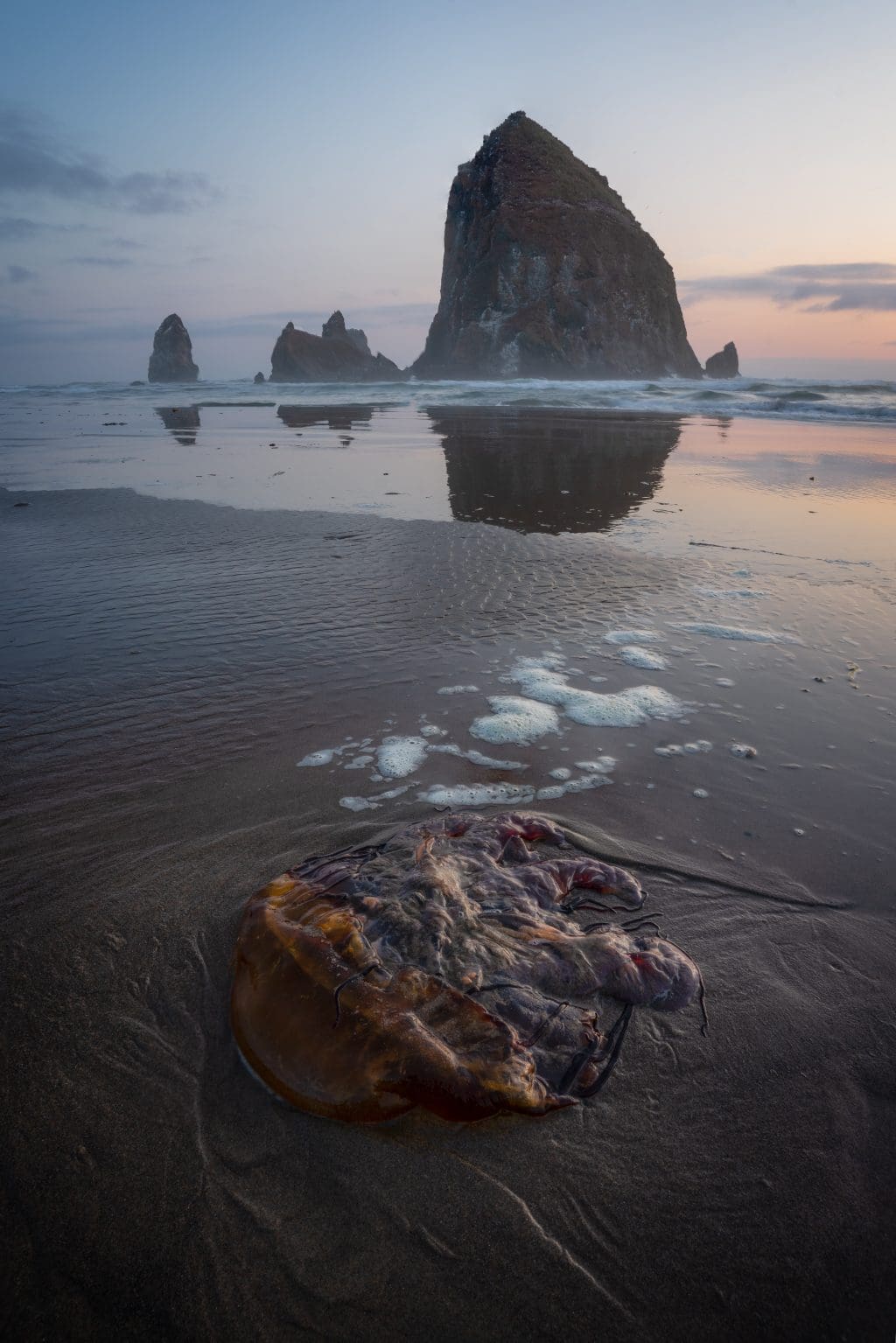
In the Philippines, you may hear the myth if you get stung by a jellyfish, the common action they will do is to urinate its sting. However, there is no scientific basis for this ‘remedy,’ and sometimes it can make the sting more painful.
Does vinegar work?
Vinegar is also one of the emergency remedies in the Philippines when stung by jellyfish. Some researchers also discovered that vinegar might cause more harm than good in cases of box jellyfish stings but recommended a general first aid kit for jelly stings in the US and Australia. For us to be properly educated, here are the steps to provide crucial immediate first aid when stung by a jellyfish:
- Rinse with Seawater: The sting could get worse if you use fresh water. To get rid of any remaining tentacles, thoroughly rinse the affected area with seawater.
- Remove Tentacles: Carefully remove any visible tentacles with tweezers or a gloved hand. Using bare hands may result in more stings.
- Vinegar Solution: Apply a vinegar solution (5% acetic acid) to the affected area for about 30 seconds to neutralize the toxins. However, vinegar should not be used for Portuguese man o’ war stings.
- Pain Relief: Applying a cold pack or ice wrapped in a cloth can help alleviate pain and reduce swelling.
- Avoid pressure and contact with sand.
- Take pain relievers: Like ibuprofen or steroid creams can lessen the pain, itching, or swelling.
- Seek Medical Attention: Regardless of the severity, it is advisable to seek medical assistance after a jellyfish sting. Healthcare professionals can evaluate the situation and provide further treatment if necessary.
Symptoms of Jellyfish stings
- Intense Pain: Jellyfish stings are often associated with a sharp, burning, or stinging pain at the site of contact.
- Welts or tracks on the skin — a “print” of the tentacles’ contact with the skin
- Itchiness (pruritus) and Irritation: Some may experience itching, tingling, or a prickling sensation around the sting area.
- Skin Changes: The skin may develop welts, blisters, or elevated, whip-like marks.
- Throbbing pain that radiates up a leg or an arm
When do jellyfish often appear on Philippine beaches? How can I recognize one?
The jellyfish is a natural occurrence in the coastal areas of the province from May to September. It depends on the wind’s direction, according to the initial assessment of the Bureau of Fisheries and Aquatic Resources (BFAR) Aklan.
Jellyfish jiggles like gelatin, and some simply appear as little, clear blobs. Others, though, are larger and more colorful, with tentacles that hang down behind them, similar to an octopus.
Moon Jelly
Disc-shaped, clear to whitish bell is about the size of a dinner plate, with fine tentacles that make a short fringe. It has a purple or pink flower shape with four “petals” in the center of its sac-like body.
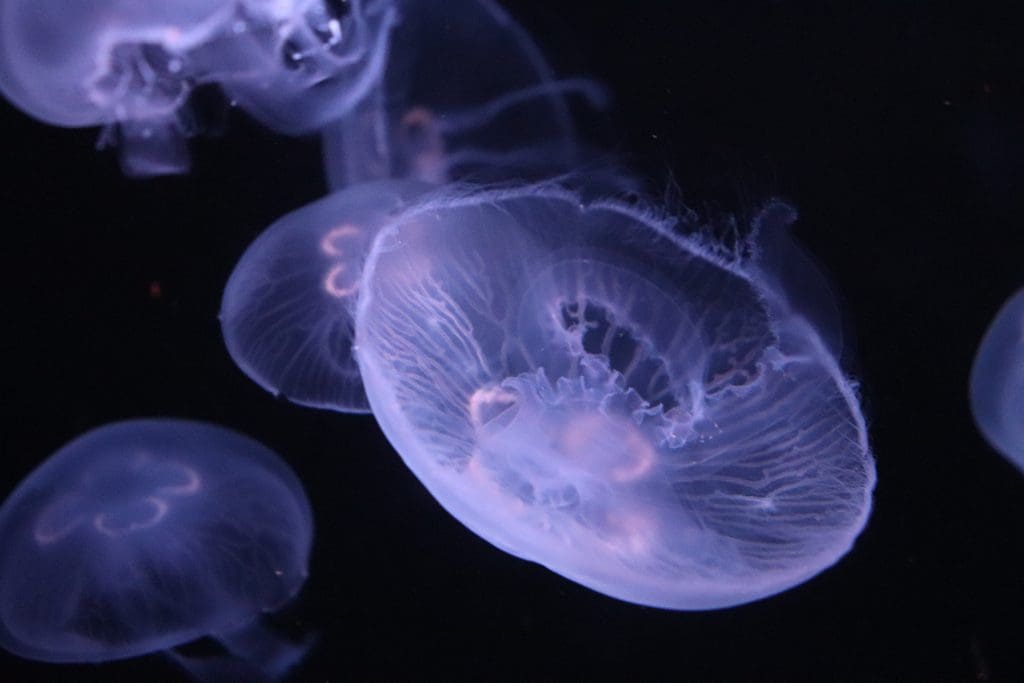
Box Jellyfish
Box jellies, also referred to as sea wasps and marine stingers, are mostly found in coastal waters. Their name comes from the cube-like shape of their bell, which is pale blue and transparent in color.
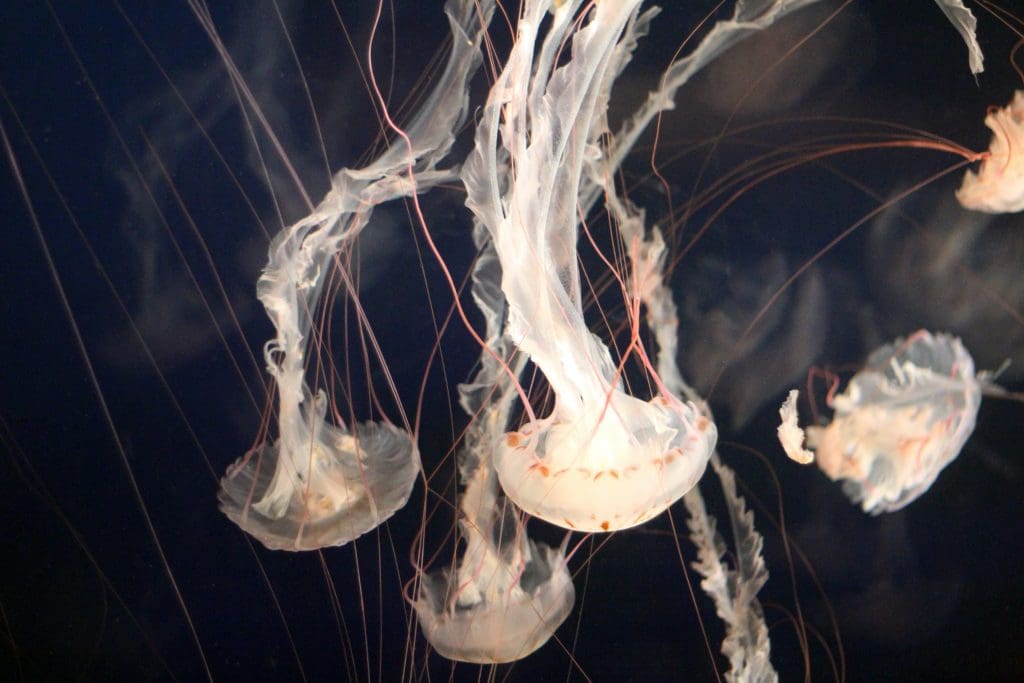
Visitors can safely experience the beach by staying informed and taking the appropriate precautions. Safe travels mga laagan!

